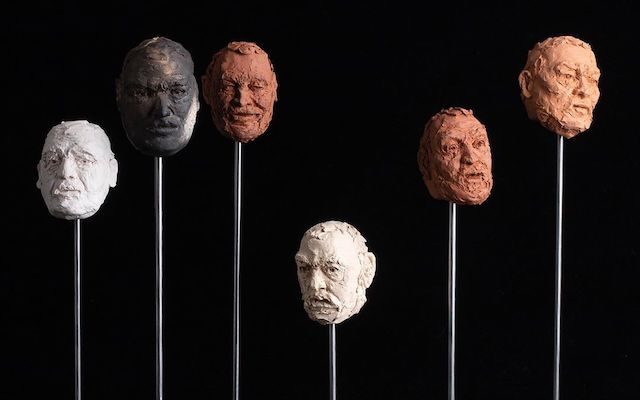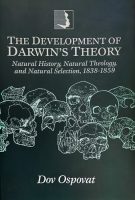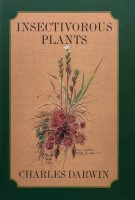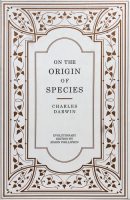20TH JULY 2019
Dear Friend of Darwin,
Fifty years ago today, members of our talented species first touched down on the surface of our planet’s moon. As giant leaps go, it hasn’t yet proved to be on quite the same scale as our ancestors’ leaving the oceans or coming down from the trees, but it’s still early days in our exploration of space. I watched the event sitting on my father’s lap. I was four years old. I wish I could say I clearly remember Apollo 11’s touchdown, but I’ve re-watched recordings of it so many times, the original experience is now inseparable from the repeats. But I’m still immensely grateful to my Dad for ensuring I would always be able to say I’d witnessed Neil and Buzz land on the moon live on TV.
One-hundred and sixty-one years ago today, while staying at The King’s Head hotel in Sandown on the Isle of Wight, Charles Darwin began to write an ‘abstract’ of his long-planned major work on evolution. It was published sixteen months later under the snappy title, On the Origin of Species by Means of Natural Selection, or the Preservation of Favoured Races in the Struggle for Life. If you haven’t read it yet, you really ought to.
Today also marks the 215th anniversary of the birth of Charles Darwin’s friend, and later enemy, the brilliant anatomist Richard Owen. Owen effectively founded the London Natural History Museum, and gave us the word dinosaur. A science hero in anyone’s books.
Missing Links
Some Darwin- and evolution-related stories that caught my eye recently:
-
Pledge to save Charles Lyell’s notebooks
294 remarkable, privately owned notebooks of Charles Darwin’s great friend the Scottish geologist Sir Charles Lyell have been temporarily blocked from export in the hope of finding a UK buyer. It is vitally important these unique historical documents remain available to researchers, rather than passing into private hands. The University of Edinburgh has launched a campaign to secure the notebooks. If you are able, please pledge whatever you can. -
Mylodon darwinii: Darwin’s ground sloth
The first specimen of Mylodon darwinii, a ground sloth found by Charles Darwin at Punta Alta in Argentinain in 1832, is now available online. It is the latest 3D model in the Natural History Museum’s online Darwin’s Fossil Mammals collection. -
Not so fast: ancient proteins shed light on sloth evolution
Talking of sloths, analysing ancient biomolecules, scientists have shown how living and extinct sloths are related to one another. The study also provides support for the hypothesis that some of the larger islands in the West Indies were once briefly connected to northern South America. -
This is a truly lousy experiment about evolution
By placing feather-eating lice on white, black, and grey pigeons, researchers showed how the parasites change colour to better blend in. -
Deaf moths use ultrasound to warn hungry bats they’re poisonous
Many species of moth use ultrasound as a defensive strategy against approaching bats. Deaf moths can’t hear bats approaching, but one group has evolved the ability to produce their anti-bat sounds continuously, and in such a way that it doesn’t attract hungry bats. -
The first known case of eggs plus live birth from one pregnancy in a tiny lizard
Darwin would have loved this transitional example. The evolution of live birth from egg-laying is no mean feat. Now new research reports on the first known example where both eggs and a live birth came from the same lizard pregnancy. -
Dogs’ eyes evolve to appeal to humans
The eyes have it… As will come as no surprise to any dog lover, scientists have found a muscle that allows dogs to make ‘puppy eyes’ and bond with humans. -
Siberia’s ancient ghost clan starts to surrender its secrets
A mysterious group of extinct humans known as Denisovans is helping to rewrite our understanding of human evolution. Who were they? -
Piece of skull found in Greece ‘is oldest human fossil outside Africa’
Remains discovered on the Mani peninsula could rewrite the history of Homo sapiens in Eurasia.
For regular links like these, please like and follow the Friends of Charles Darwin Facebook page.
Natural Selections
Some book recommendations for you:
Journal of Researches
Progress on my ‘Darwin book’ continues at a glacial pace. Without doubt, the oddest development (which I can now report on, having formerly been sworn to secrecy) was being asked to pose for a series of ceramic sculptures by the artist Jo Pearl. Jo’s work was inspired by Charles Darwin’s book The Expression of the Emotions in Man and Animals. I’m confident the strange experience of seeing six versions of my head displayed like beetles on spikes will make it into my book.

Expression of Emotions
Thanks for taking time to read this newsletter. Please feel free to forward it to any friends you think might like to subscribe.
Finally, at the risk of repeating myself, if you are able to pledge any amount of funding to help secure Charles Lyell’s notebooks for historical research, please do so.
See you next time!
Richard Carter, FCD
friendsofdarwin.com
richardcarter.com



